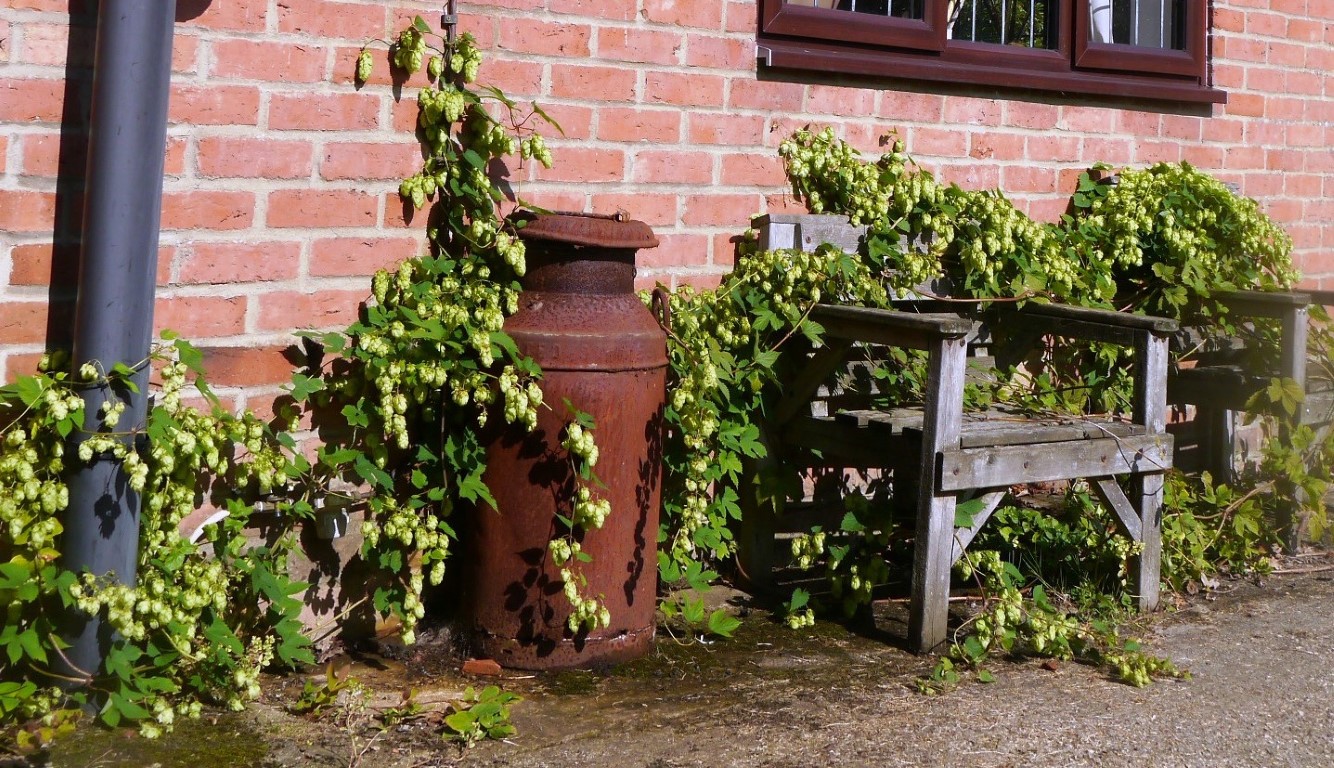
The total monthly rainfall this month was 57.5 mm; the maximum daily rainfall of 16 mm was recorded on August 31st. A maximum temperature of 27°C was recorded on August 29th while the previous day was the coldest day (14°C). There were 20 days when the maximum temperature was 20°C or more, and 11 days when it was below 20°C. The driest week was between the 21st and 27th August when only 5 mm of rain fell.
-
 Crambus micro moth
Crambus micro moth
Crambus micro moth
Crambus micro moth
-
 Female wild hop
Female wild hop
Female wild hop
Female wild hop
-
 Grey dagger moth
Grey dagger moth
Grey dagger moth
Grey dagger moth
-
 Male wild hop
Male wild hop
Male wild hop
Male wild hop
-
 Yellowing hornbean leaves
Yellowing hornbean leaves
Yellowing hornbean leaves
Yellowing hornbean leaves
https://www.kentfieldclub.org.uk/news/little-barton-farm-wildlife-notes/august-2017#sigProId44c3da4c8d
We are not aware of any further species of wildflower blooming this month, so our wildflower total for the year remains at 62. However, on the 8th August, a continuous loud humming among the purple blooms of the knapweed led us to discover what must have been a whole colony of honey bees gathering nectar. Perhaps a new beekeeper has moved into the area. By the 25th, the bees had moved on to the fleabane, leaving a flock of about 30 goldfinches feeding on the remaining knapweed seed-heads. On the 10th, by which time 24 mm of the month’s rain had fallen, several fungi had appeared in the woodland and around field-edges, including common funnel, parasol, and birch polypore. More of nature’s “fruits” continued ripening this month, with many hawthorn berries being ready by the 14th, acorns dropping on the 24th, dog rose-hips softening by the 28th, and sloes a deep purple by the 30th. On the 25th, we photographed two hop plants – one male, the other female (see photographs), which have “escaped” from our hedgerows and occupied two separate areas between the house and its surrounding path.
A male emerald damselfly, probably the last of our 19 species, appeared among soft rush beside our lake on the 16th. As autumn progresses, dragonfly species are beginning to disappear. By the end of the month, we only had 8 species on site (blue-tailed, red-eyed, and white-legged damselflies; common and ruddy darters; and brown, southern, and migrant hawkers). With no new butterfly species appearing during the month, our total remains at 24. By the last day, 8 species remained, including meadow brown, common blue, small copper, large white, small white, green-veined white, red admiral, and clouded yellow. The comma (29th) and painted lady (28th) may also re-appear next month. The 6 new moths which appeared this month bring our total to 47 species so far. On the 16th, the micro, brown plume moth, which we have not seen before, appeared on the inside of our kitchen window, where it remained for a fortnight until ushered out through an open window. On the 19th, we found a grey dagger moth (see photograph) on our Velux roof-light window. We have not seen this moth before but had recorded a grey dagger moth caterpillar on 4th September 2010. On the 21st, a micro-moth of the Crambus species (probably C. perlella; see photograph) came to light in the front porch accompanied by a small square-spot moth (kindly confirmed by Keith Palmer). The 23rd produced a setaceous hebrew character moth in the porch, while a pale eggar moth appeared inside the lighted porch window. Susan went to get my camera, and as I focussed it on the moth, it unexpectedly flew straight down towards the floor. The dog beside me opened its mouth, and “snap!”, it had eaten it!
On August 29th we discovered that the swallows which raised two broods of young in our garage had departed on their migration south. It is highly likely that we will see other swallows over the next week or two, as some usually stop to feed above our lake on their way to Africa
At 8.30am on the 31st August, an autumn mist, illuminated by a brightly-rising sun, highlighted hundreds of glistening spider- webs in the wildflower meadow nearest our house. Unfortunately, the four photographs we took failed to live up to the splendour of the scene we had just witnessed
Unexpectedly we found early yellowing on the leaves of some hornbeam on the 15th (see photograph), followed by silver birch on the 18th. Poplar then followed on the 21st, with hazel on the 22nd. Three of these – hazel, poplar, and hornbeam were dropping leaves by the 30th. It seems autumn has started.
